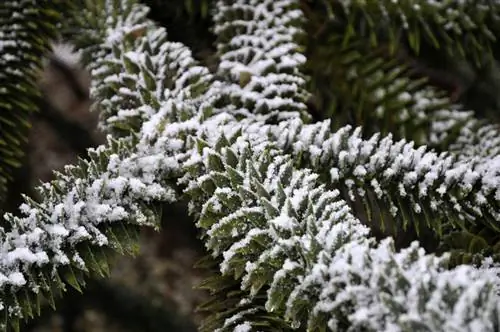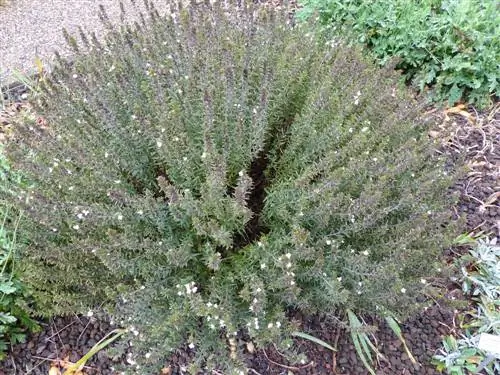- Author admin [email protected].
- Public 2023-12-16 16:46.
- Last modified 2025-06-01 06:02.
Winter is always a difficult phase for almost all animals. There are a variety of methods to survive cold and food shortages and to ensure the preservation of the species. In wasps, the annual cycle is a particularly astonishing cost-benefit phenomenon.

What happens to wasps in winter?
In winter, only fertilized young wasp queens survive by staying in protected hiding places such as tree bark and protecting their bodies from the cold using glycerol. Your organism switches to economy mode to save energy.
Immense mobilization of forces for species conservation
Wasps, especially the colony species, put in enormous effort to secure their species from year to year. The cycle can be broken down into the following stages:
- Nest founded by queen
- Raising tons of workers
- Raising sexual animals
- Nuptial flight and mating
- Overwintering of the young queens
Spring - founding of a state and setting up an army of workers
First, a wasp queen establishes a new colony in the spring and lays eggs in the first brood chambers. By the summer, huge numbers of individuals have to be raised, devoting their entire existence to preparing for the autumn mating season. This is how the wasps produce one generation of workers after another throughout the spring.
Late summer - emergence of sexual animals
From August onwards, the sexual animals that are important for actual reproduction are raised - i.e. drones and new young queens. During this time, the workers have to do so much care work that they themselves develop an enormous appetite and feel like they pounce on everything sweet they can get without considering the loss - as most of us have probably already experienced, including our ice cream scoops or Danish pastries at the garden table.
Autumn - peak and reproduction
In autumn the so-called nuptial flight occurs - drones and young queens leave the nest to mate with other sexes outside across states. Once this has been completed, the entire team that has worked towards this most important step in the annual cycle takes part. Before they die, the animals do some final work in the nest and clean it of weak or malformed larvae. Then they have finally fulfilled their target and are no longer needed.
Winter
The only wasps that do not die in winter are the fertilized young queens. They are what all the preparatory work has been invested in. In order for a young queen to survive the cold period without food, she looks for a sheltered place that is safe from strong temperature fluctuations: for example, a niche under tree bark, a rotten tree stump or a compost heap. There she hides and assumes a crouched position: she folds her wings under her body and puts her legs close to her sides. Some field wasps also overwinter in groups.
In order not to freeze, its body produces the sugar alcohol glycerol (which is also used in antifreeze) and allows the wasp to withstand temperatures of up to -20°C. To prevent starvation, your body switches to economy mode: your breathing and heartbeat slow down significantly, so that only a minimum of energy is used.
Despite these precautions, not all young queens manage to survive the winter. They can be affected by mold or preyed upon by rodents or birds.






